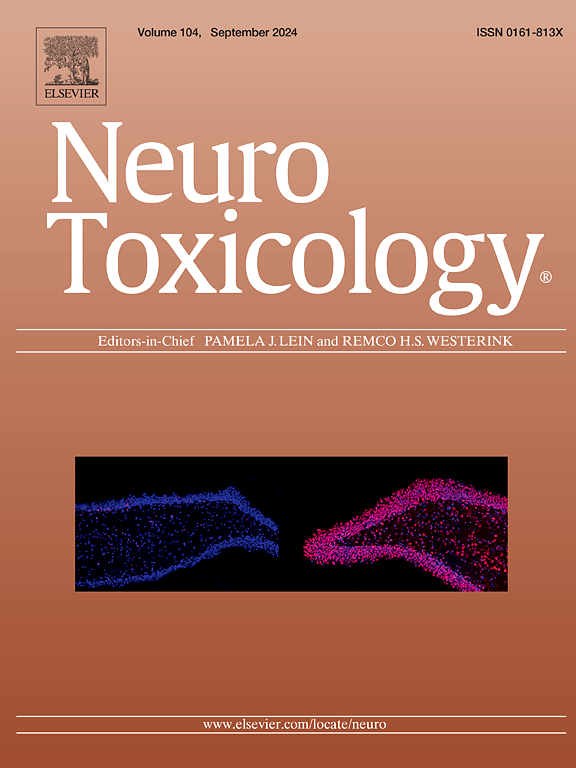Environmental concentrations of glyphosate through direct or parental exposure alter nervous system development and reduce the fertility rate in zebrafish
IF 3.9
3区 医学
Q2 NEUROSCIENCES
引用次数: 0
Abstract
N-(phosphonomethyl)glycine (glyphosate) is the most widely used herbicide worldwide. Although it has been extensively studied, few studies use realistic environmental concentrations to assess its potential effects on fish embryos and larvae. This work aims to evaluate potential neurotoxic and reproductive effects of realistic concentrations of glyphosate in non-target aquatic species using zebrafish larvae. Biological and reproductive biomarkers (condition factor, hepatic and gonadic indices, and fertility rate) were evaluated for adults exposed to 0, 10, 100, and 1000 µg/L, while a transcriptomic comparison was carried out for larvae from both exposure scenarios at 1000 µg/L. The fertility rate of exposed parents decreased with increasing glyphosate concentration, while gonadosomatic (GSI) and hepatosomatic (HIS) indices of females treated with 100 µg/L glyphosate were significantly higher in glyphosate-exposed fish compared to the control group; however, glyphosate treatment did not significantly change GSI or HSI in males. Transcriptomic analysis in larvae showed that glyphosate could alter developmental and metabolic processes, targeting the nervous system in both exposure schemes. The ability of glyphosate to alter the development of the nervous system in larvae of exposed parents suggests that exposure to gametes could produce intergenerational alterations, with potential ecotoxicological implications that remain to be determined.
环境浓度的草甘膦通过直接或父母接触改变神经系统发育和降低斑马鱼的生育率。
N-(磷甲乙基)甘氨酸(草甘膦)是世界上使用最广泛的除草剂。尽管对其进行了广泛的研究,但很少有研究使用实际的环境浓度来评估其对鱼类胚胎和幼虫的潜在影响。本研究旨在评估实际浓度草甘膦对非目标水生物种斑马鱼幼虫的潜在神经毒性和生殖影响。研究人员评估了暴露于0、10、100和1000µg/L环境下的成虫的生物学和生殖生物标志物(条件因子、肝脏和性腺指数以及生育率),并对暴露于1000µg/L环境下的幼虫进行了转录组学比较。随着草甘膦浓度的增加,接触草甘膦的父母的生育率下降,而100µg/L草甘膦处理的雌性草甘膦的性腺(GSI)和肝体(HIS)指数显著高于对照组;然而,草甘膦处理没有显著改变男性的GSI或HSI。幼虫的转录组学分析表明,草甘膦可以改变发育和代谢过程,在两种暴露方案中都以神经系统为靶点。草甘膦能够改变接触配子的父母的幼虫神经系统的发育,这表明接触配子可能会产生代际改变,潜在的生态毒理学影响仍有待确定。
本文章由计算机程序翻译,如有差异,请以英文原文为准。
求助全文
约1分钟内获得全文
求助全文
来源期刊

Neurotoxicology
医学-毒理学
CiteScore
6.80
自引率
5.90%
发文量
161
审稿时长
70 days
期刊介绍:
NeuroToxicology specializes in publishing the best peer-reviewed original research papers dealing with the effects of toxic substances on the nervous system of humans and experimental animals of all ages. The Journal emphasizes papers dealing with the neurotoxic effects of environmentally significant chemical hazards, manufactured drugs and naturally occurring compounds.
 求助内容:
求助内容: 应助结果提醒方式:
应助结果提醒方式:


